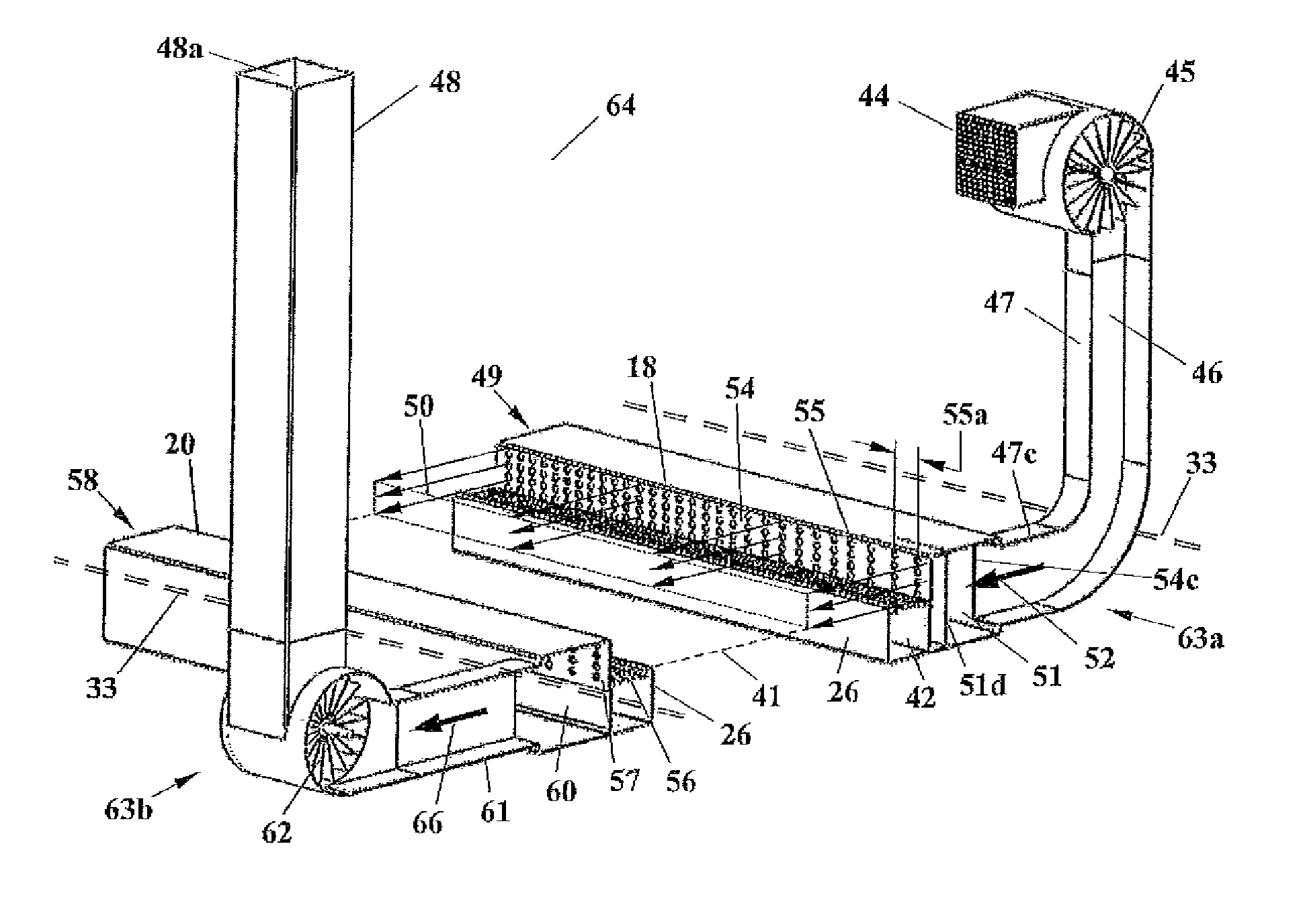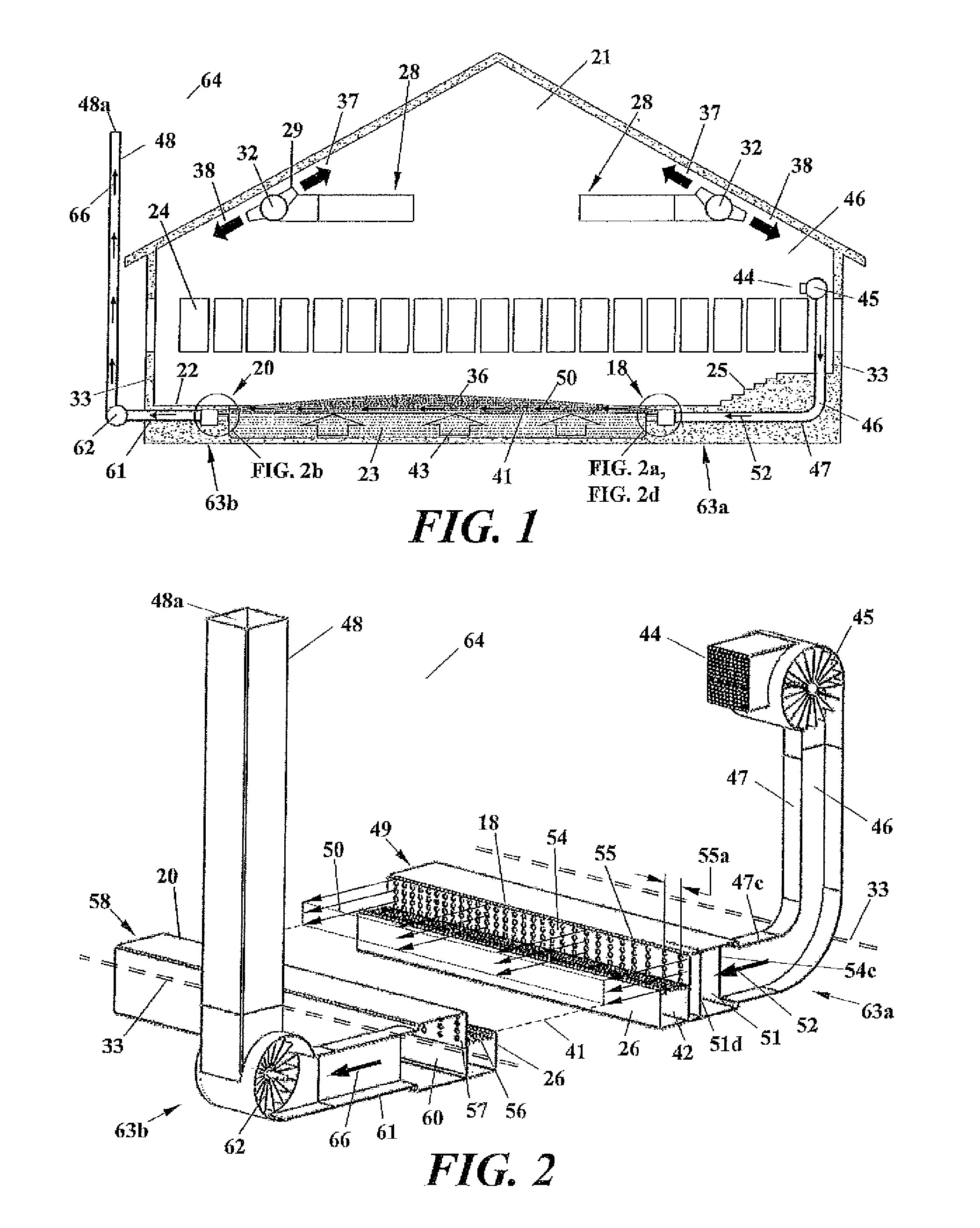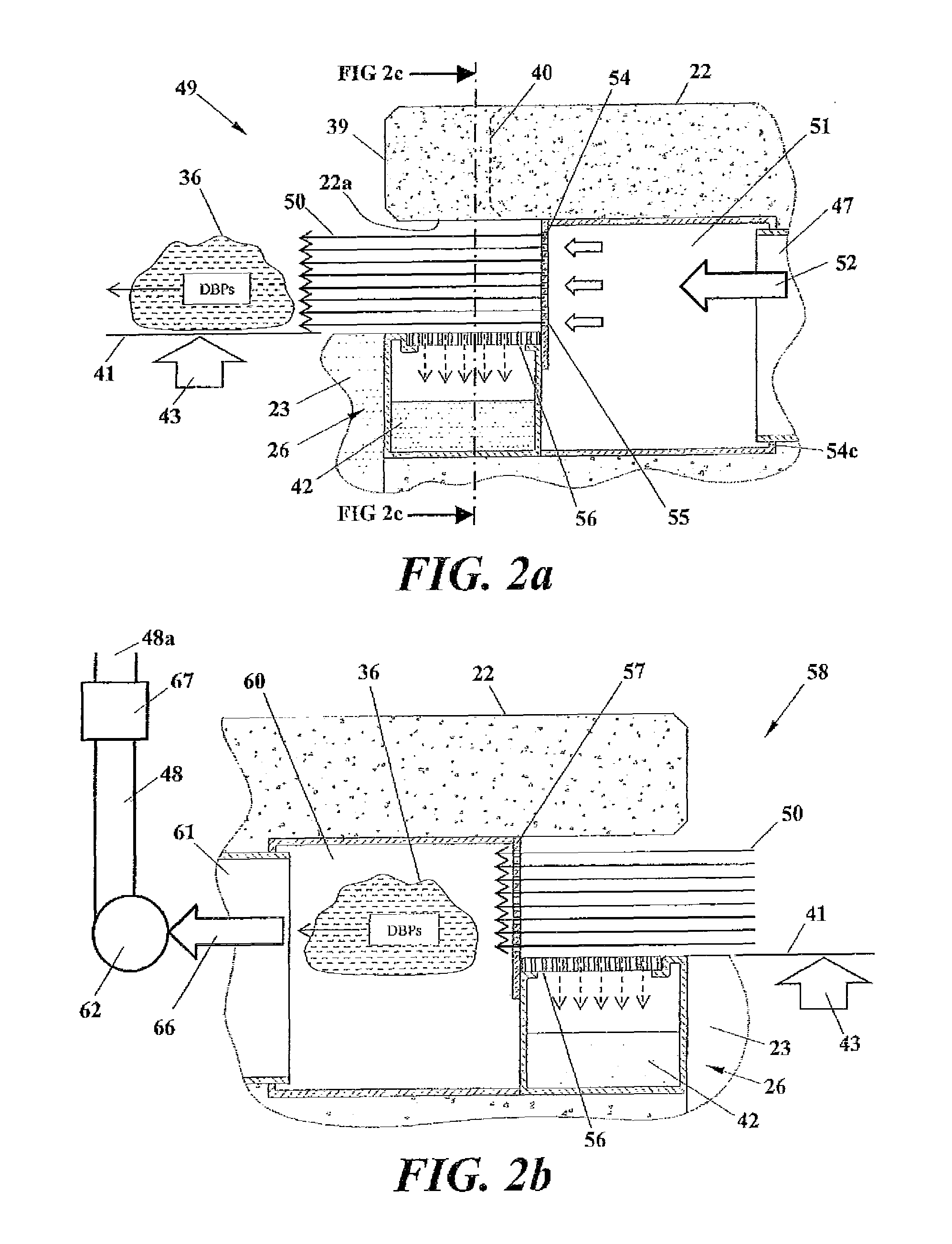Self-contained system for scavenging contaminated air from above the water surface of an indoor swimming pool
a self-contained system and indoor swimming pool technology, applied in ventilation systems, heating types, separation processes, etc., can solve the problems of compound exposure to certain types of cancer, eye, nose and throat irritation, corrosion of pool building components and equipment, etc., and achieve the effect of effective scavenging and minimizing mixing with room air
- Summary
- Abstract
- Description
- Claims
- Application Information
AI Technical Summary
Benefits of technology
Problems solved by technology
Method used
Image
Examples
Embodiment Construction
[0010]Apparatus and methods are disclosed for removing disinfectant by-product contaminants that escape into the air above the water surface of an indoor swimming pool. The apparatus and methods provide a self-contained system that operates essentially independently of the HVAC system that services the building surrounding the indoor swimming pool. The apparatus and methods displace and remove contaminated air from the volume of air that sits immediately above the waterline of indoor swimming pools. The apparatus and methods employ a laminar piston-like mass of air that is continuously generated from one side of the pool, sweeps across the water surface of the pool to the opposite side of the pool and is sucked away from the opposite side of the pool. The apparatus and methods are equally applicable to a modified perimeter gutter system and to a gutter-less pool system and can employ air supply fans, air exhaust fans, specialized laminar air flow diffusers, associated plenums and du...
PUM
| Property | Measurement | Unit |
|---|---|---|
| Reynolds Number | aaaaa | aaaaa |
| Reynolds Number | aaaaa | aaaaa |
| area | aaaaa | aaaaa |
Abstract
Description
Claims
Application Information
 Login to View More
Login to View More - R&D
- Intellectual Property
- Life Sciences
- Materials
- Tech Scout
- Unparalleled Data Quality
- Higher Quality Content
- 60% Fewer Hallucinations
Browse by: Latest US Patents, China's latest patents, Technical Efficacy Thesaurus, Application Domain, Technology Topic, Popular Technical Reports.
© 2025 PatSnap. All rights reserved.Legal|Privacy policy|Modern Slavery Act Transparency Statement|Sitemap|About US| Contact US: help@patsnap.com



